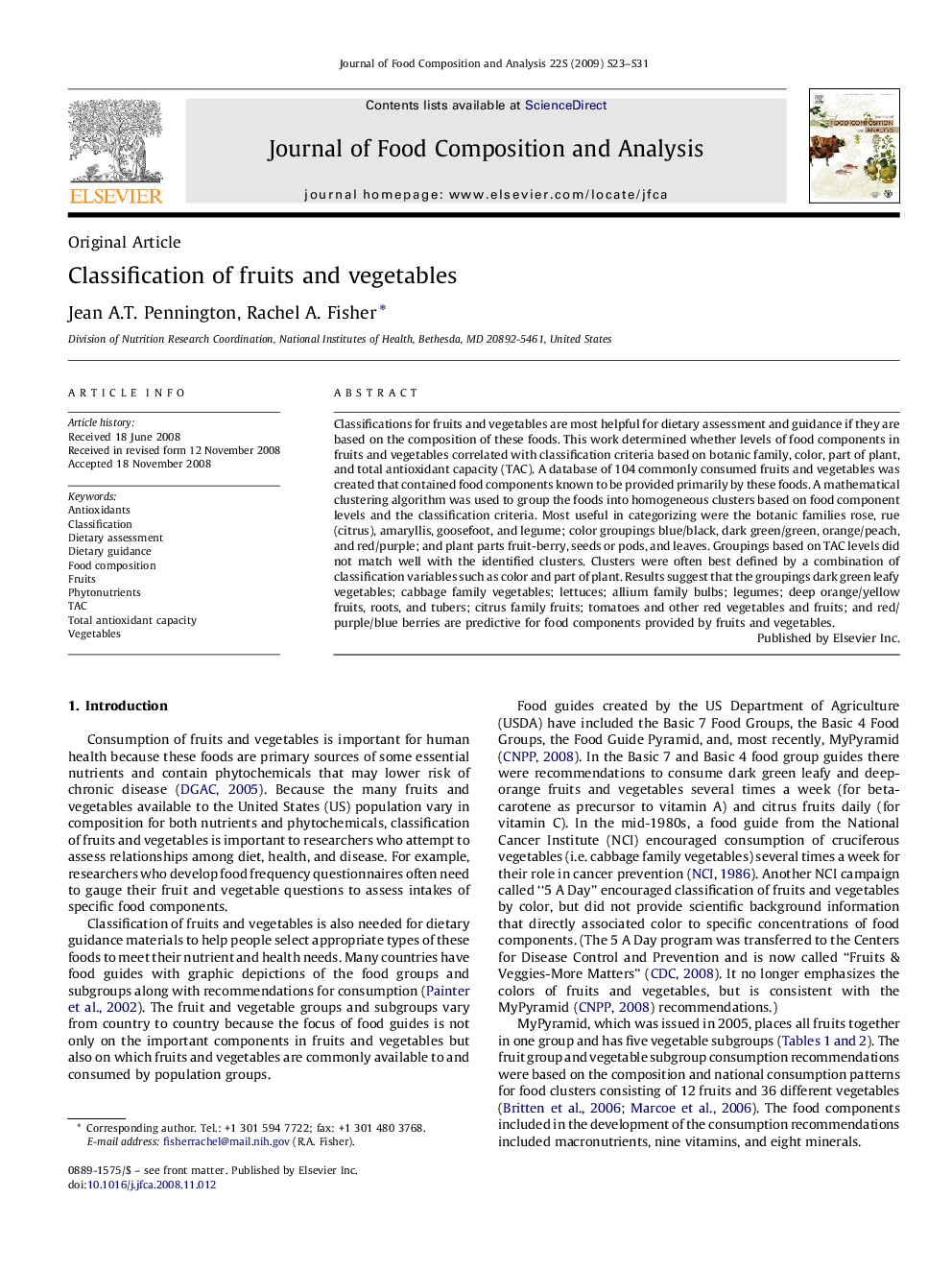| Article ID | Journal | Published Year | Pages | File Type |
|---|---|---|---|---|
| 1219013 | Journal of Food Composition and Analysis | 2009 | 9 Pages |
Classifications for fruits and vegetables are most helpful for dietary assessment and guidance if they are based on the composition of these foods. This work determined whether levels of food components in fruits and vegetables correlated with classification criteria based on botanic family, color, part of plant, and total antioxidant capacity (TAC). A database of 104 commonly consumed fruits and vegetables was created that contained food components known to be provided primarily by these foods. A mathematical clustering algorithm was used to group the foods into homogeneous clusters based on food component levels and the classification criteria. Most useful in categorizing were the botanic families rose, rue (citrus), amaryllis, goosefoot, and legume; color groupings blue/black, dark green/green, orange/peach, and red/purple; and plant parts fruit-berry, seeds or pods, and leaves. Groupings based on TAC levels did not match well with the identified clusters. Clusters were often best defined by a combination of classification variables such as color and part of plant. Results suggest that the groupings dark green leafy vegetables; cabbage family vegetables; lettuces; allium family bulbs; legumes; deep orange/yellow fruits, roots, and tubers; citrus family fruits; tomatoes and other red vegetables and fruits; and red/purple/blue berries are predictive for food components provided by fruits and vegetables.
